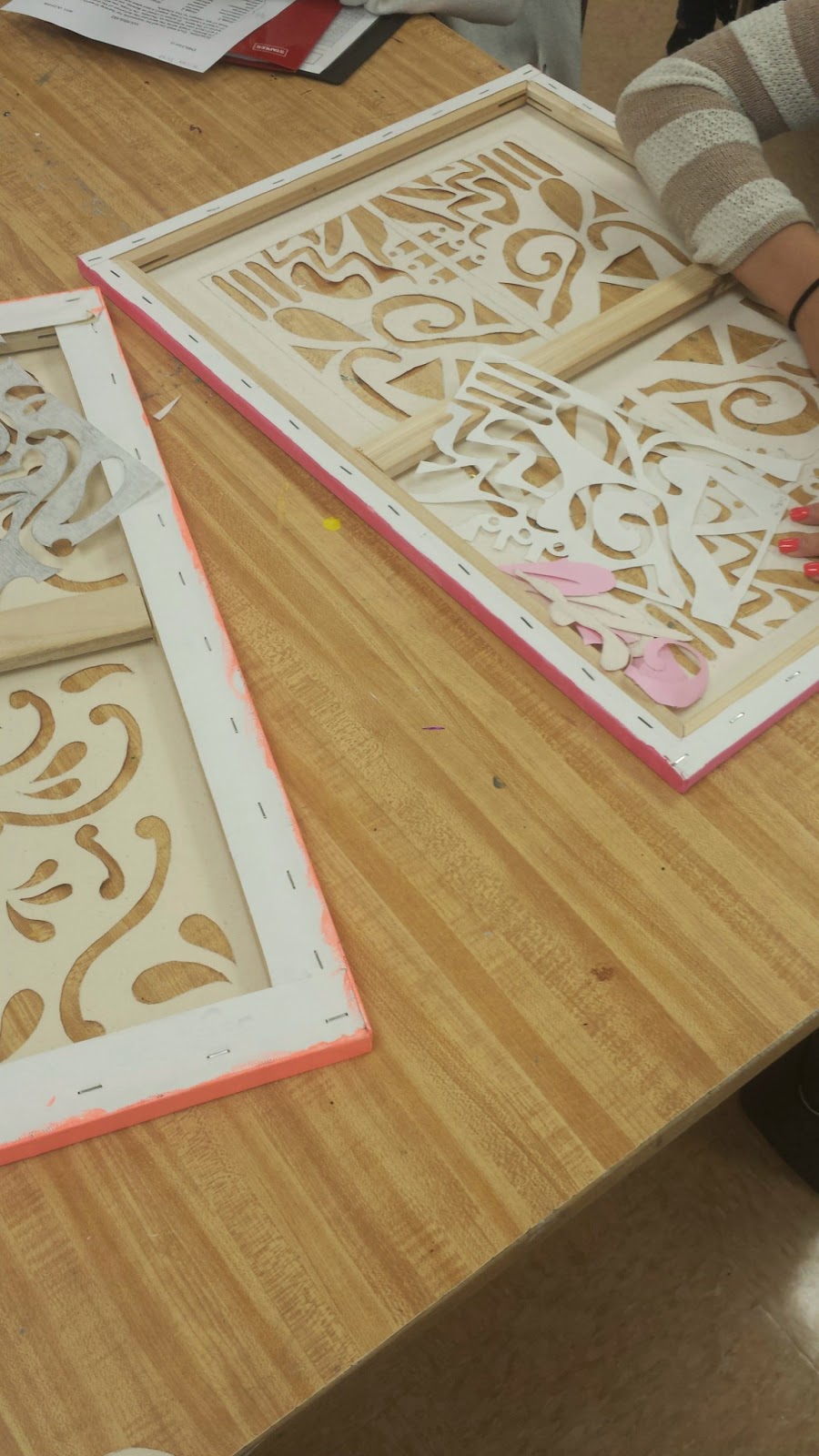ceramics, sculpture and 3D design in addition to my work at the Middle School. This is an exciting change on both a creative and professional level, and I am honored to take it.
I was quickly faced with a question I have never had to answer....What does a teacher do with a multi-level sculpture class for the first two weeks of school??? I needed to find something that could give me a good baseline assessment of the skills present within the classroom, as well as have a strong, important message about art, structure and aesthetics. No problem, right?
I began to think about change. The change in my teaching position, the change in the level and the change, for me, from a mostly 2D lesson repertoire to a 3D set. I decided to take my own roots as a painter, and mix things up. For both the sake of my students, as well as myself.
We all know what a stretched canvas is used for. We paint on them. We mush our brushes into spectacular colors and apply them, adding layer upon layer of glorious goop until we have something that "wows" our audience. But what if we used a canvas for something different? What if we changed its purpose? Created a new approach to making art? Suppose we used a pre -stretched canvas as a sculpture!
 Sculpture students in my high school class (mixed level and grades) were asked to come up with a "Mod" pattern, the type we're seeing regain popularity in textiles and home goods. The pattern was then transferred into a template on cardboard, so it could be replicated. With great care, each student began to cut away the canvas, to expose small holes in the material. The patterns that remained were a true example of both relief sculpture AND subtractive sculpture.
Sculpture students in my high school class (mixed level and grades) were asked to come up with a "Mod" pattern, the type we're seeing regain popularity in textiles and home goods. The pattern was then transferred into a template on cardboard, so it could be replicated. With great care, each student began to cut away the canvas, to expose small holes in the material. The patterns that remained were a true example of both relief sculpture AND subtractive sculpture. Students really responded well to the idea of patterning, and even took some existing images that they researched, and transformed them into new and improved designs.
We discussed the idea of taking an item and transferring its purpose. The class, as
a whole admitted to never thinking of using a canvas for anything but painting. This lesson worked out well for several reasons. The first being an awesome
transition (for all of us) from 2D to 3D. The second being a fantastic way to assess my new students in a practical, and creative way (not necessarily through testing). I was really lucky to be able to get to know my students while watching them open doors for themselves to new and innovative ways to create!



